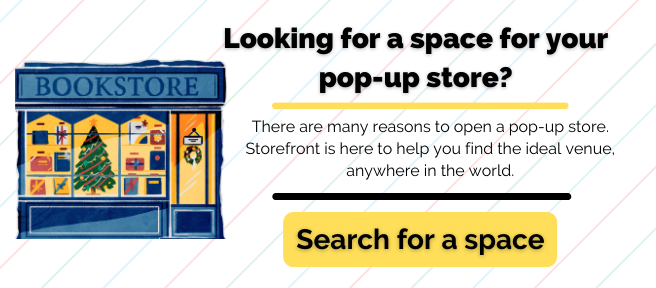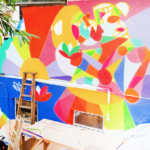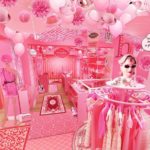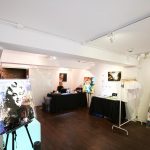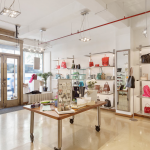What is a pop-up shop? Everything you need to know to try short-term retail > 23 Smart Pop-Up Shop Ideas to Steal From These Successful Brands > The 5 Types of Pop-Up Shops and How to Figure Out What’s Right for You
Never done a pop-up before and getting ready for your first one this holiday season? No idea where to start and what the options are? Don’t worry, ya boy is here to help you out!
I started at Storefront just a little under a year ago and prior to that my experience was in technology. Namely in ecommerce and selling software of all different types. Commercial real estate isn’t mentioned in that list and believe me when I say that I knew nothing about it a year ago. I’m not an expert in commercial real estate at this point but I’m no slouch when it comes to picking the right place for a pop-up shop either. I’ve learned a lot talking to space owners of all types so now I’m going to share what I’ve learned with you.
Storefront is home to many different types of pop-up shops and spaces which can make things a little overwhelming. I think the best way I can help is to break them down and tell you the advantages of each + the things you’ll need to consider. We’ll start with spaces that require the least amount of resources first, and progressively getting more resource intensive.
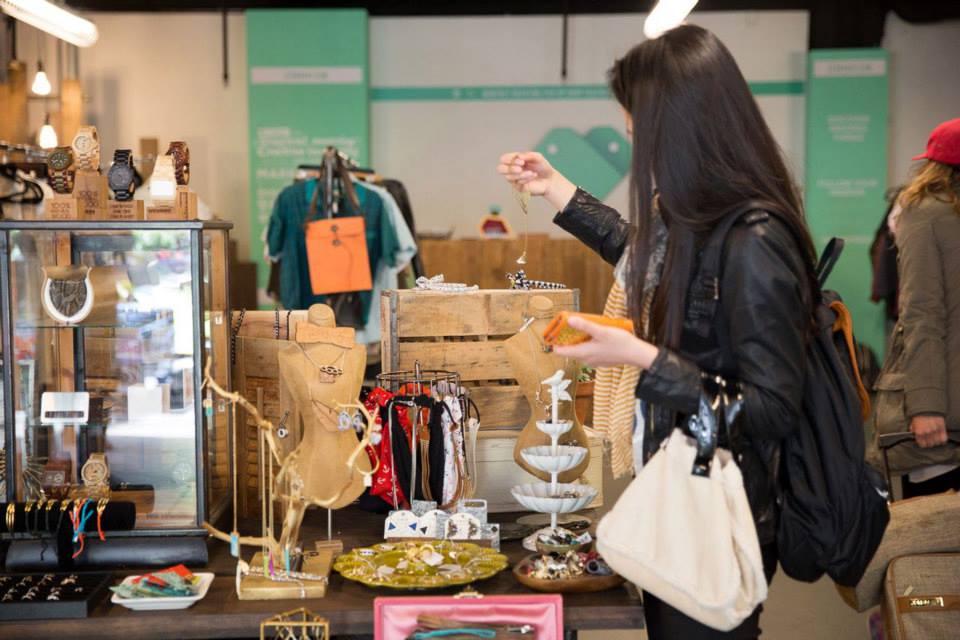
5 Types of pop-up shops
There are a lot of factors to consider when trying to figure out the right type of pop-up space for your business. It can be overwhelming trying to figure out which type of space is right for you and your business goals. This blog post will outline the 5 different types of pop-up shops or spaces and help you figure out which one is right for you.
1. Store-Within-a-Store
Truly one of the most efficient uses of space and at the heart of the collaborative consumption movement. If I own a local store that sells clothing and I have extra space in my store, I’m more than ready to offload one of my biggest expenses… my rent. It doesn’t matter if you’re a boutique, coffee shop, bar, or restaurant. Extra space = Opportunity for extra money. These spaces typically come as a move-in ready space with some minor decorating and set up. You’ll benefit from the regulars that visit the store and the hosts benefit from the new foot traffic you’re bringing them. It’s a win-win and we see this all the time on the site.
The Advantage: Flexibility. If you’re looking for shorter timeframes like a week or by the day, store within a store is a great option.
What to consider: Are you a good fit for the clientele and the brands that are already in the store? The owners will want to make sure it’s a match so be ready to showcase your products when you’re in discussions.
Read More: A Guide to Effective Pop-Up Store Collaborations for Small Businesses
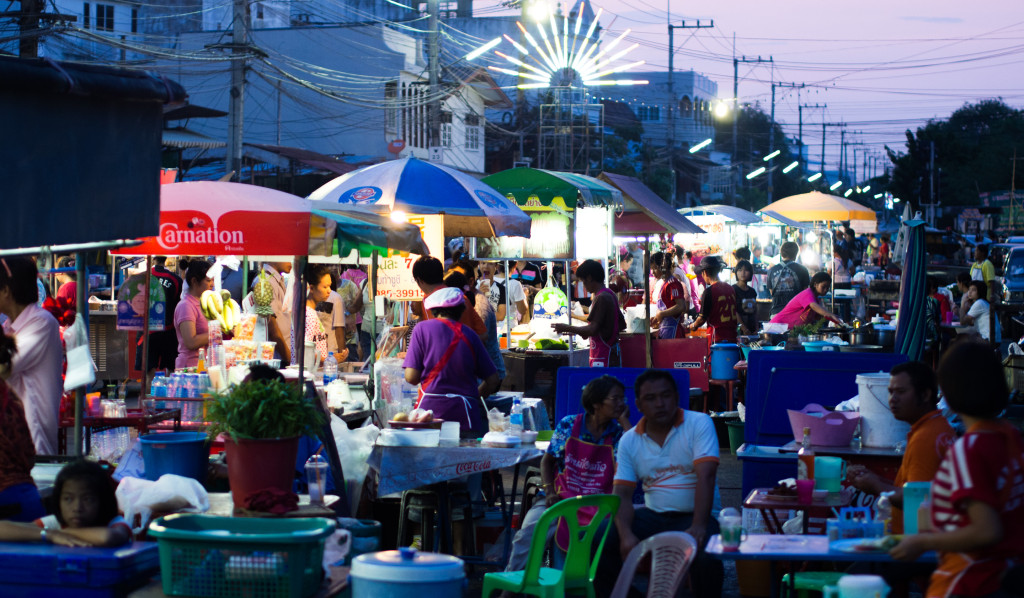
2. Kiosks & Booth Space
You’ll find these either in shopping centers or local markets. These are just what you think they are. The retailer that setups up shop in the middle of the mall where the customers are walking by. The number one rule in retail: go where your customers are! We’ve seen a huge amount of interest in kiosks & booth spaces because it requires so little setup and investment. Forecommerce retailers going offline for the first time, this is a match made in heaven. You’re telling me all I have to do is buy signage, show up with my products, make them look halfway decent on the shelving I’m provided, and then sell to people walking by? I can do this all day (even without my daily Red Bull).
The Advantage: Built-in foot traffic. Shopping centers & markets are a great way to keep new customers walking in front (and hopefully in) your store.
What to consider: What othe r retailers are going to be in your general vicinity? Do you compliment each other or compete? Let’s hope it is the first.
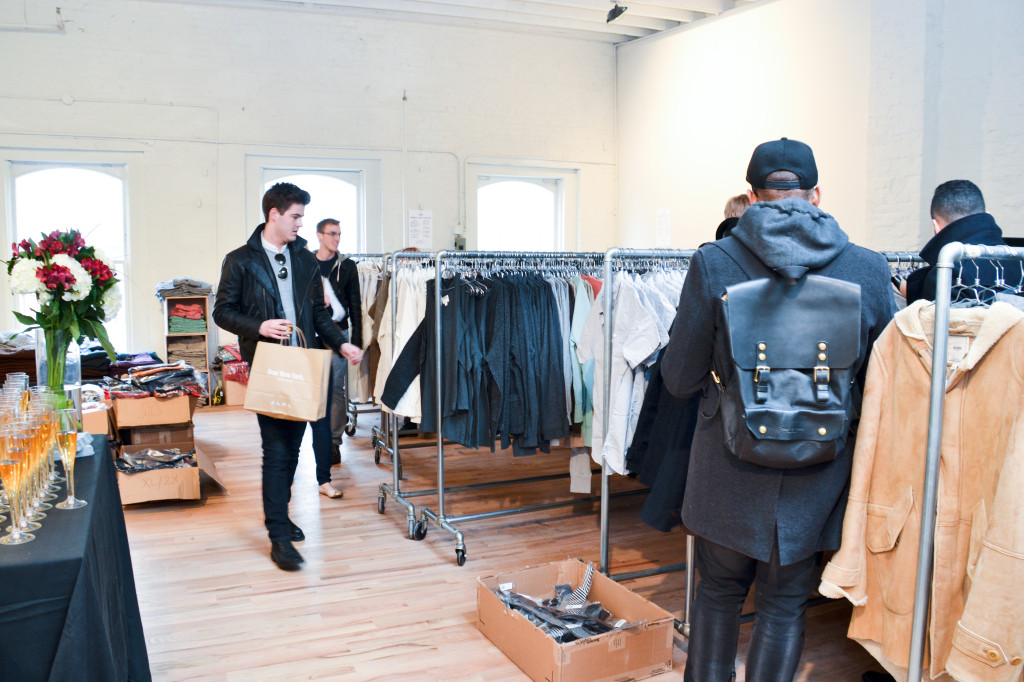
3. Gallery, Event, and General Pop-up Space
Many art galleries & event spaces are in beautiful street-level retail stores. Beyond that, there are spaces that now just host pop-ups all the time, with retailers coming and going monthly, sometimes weekly. These spaces have great flexibility with rental lengths, oftentimes are move-in ready, and are even great for cocktail hours/parties for your top customers. You’ll likely benefit from experienced space owners who have also seen many pop-ups!
The Advantage: You can book your dates really far in advance. If you’re a planner these spaces are for you. Because they are constantly rotating brands/event in & out they like to book up as far in advance as they can.
What to consider: Can you get primetime dates? Renters book important dates in advance so it’s very important to get a jump on these types of pop-up shops.
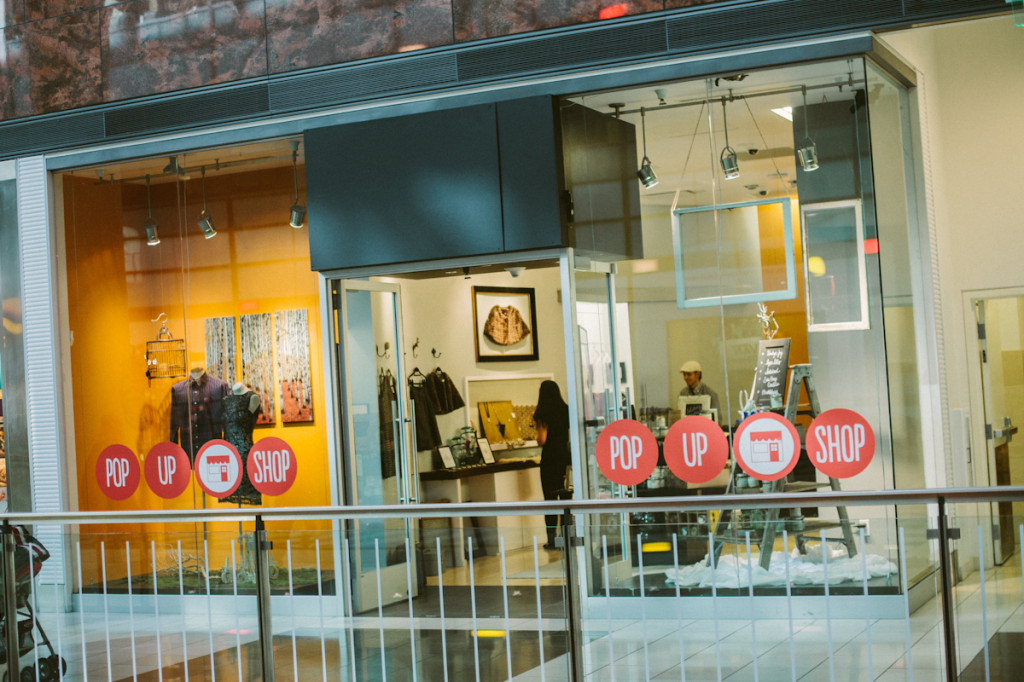
4. In-Line Shopping Center Stores
You know, in malls, all the stores that line the whole place? Besides the big anchor stores at the entrances, these are considered in-line spaces. They are the next step up from the kiosk and still come with the built-in foot traffic that you love. In-line spaces are usually really cost-effective as well. Coming in significantly less expensive on average than our last category of spaces (I’ll get there, be patient).
The Advantage: Shopping centers already know temporary retail. They’ve been leasing out temporary space for a long time. They’ll understand your needs and will work hard to make you successful.
What to consider: Where are you going to be located in the mall, and what stores will be next to you? Make sure you’re happy with your placement and the foot traffic that goes by.

5. Vacant Street Level Retail Space
Anybody who’s sold something or even just thought about it has dreamed of having their own store! Street-level storefronts represent some of the world’s most coveted and exclusive retail spaces. Know why? Because brands make it rain in these spaces. Consumers love to shop, they love an in-store experience. Of course, we believe this at Storefront, and we want you to know that these spaces produce results for renters. It’s undeniable! If you’ve got the budget and you’re looking to get some new customers, you’ve arrived at your destiny.
The Advantage: Ultimate control over space located in the best shopping neighborhoods. This is playing in the big leagues!
What to consider: You might not be able to book too far in advance. Many landlords are looking for long-term tenants, meaning if you rent from them for the short term, you have to be opportunistic. You’ve got good timing, right?
How to figure out what type of pop-up shop is right for you?
There are many factors to consider when choosing the right pop-up shop for your business. The first step is determining what type of pop-up shop is right for you.
There are three main types of pop-up shops: freestanding, semi-permanent, and temporary.
Freestanding pop-up shops are the most permanent type of pop-up shop and are typically used for long-term leases.
Semi-permanent pop-up shops are typically used for shorter leases and are less expensive to build out than freestanding pop-up shops.
Temporary pop-up shops are the least expensive and can be used for short-term leases or special events.
Once you have determined the type of pop-up shop that is right for you, the next step is to choose the right location. The location of your pop-up shop should be based on your target audience. If you are targeting a local audience, then you will want to choose a location that is convenient for them.
Pop Up Stores to build brand awareness and enter a new market
Pop up stores have become a popular way for brands to build awareness and enter new markets. They are temporary stores that are typically open for a few days or weeks. Brands use pop-up stores to test the waters in new markets, introduce new products, or build brand awareness.
There are several benefits of using pop-up stores to build brand awareness and enter new markets. Pop-up stores are a low-cost way to test the waters in new markets. They are also a great way to build brand awareness and create a buzz around new products. Additionally, pop-up stores are a flexible way to enter new markets. Brands can open pop-up stores in a variety of locations, and they can be open for as long or short as they want.
Read More: How Freddie’s Flowers Used Pop-Up Stores To Create Brand Awareness For Their Business
Conclusion
In conclusion, pop-up spaces are changing the way brands interact with their customers. Pop-ups, or temporary retail venues, offer brands a chance to stand out in a saturated market, reach new customers, and capitalize on demand to create buzz about their products and message. Pop-ups offer brands the chance to test new strategies without a large investment.
- How to Open a Successful Pop-Up Shop in London’s Fast-Fashion Neighborhoods - December 23, 2022
- The Benefits of Opening a Pop-Up Shop in NYC’s Fast-Fashion Neighborhoods - December 23, 2022
- Reaping the Benefits of Long-Term Pop Up Stores: Tips and Advice - December 23, 2022

